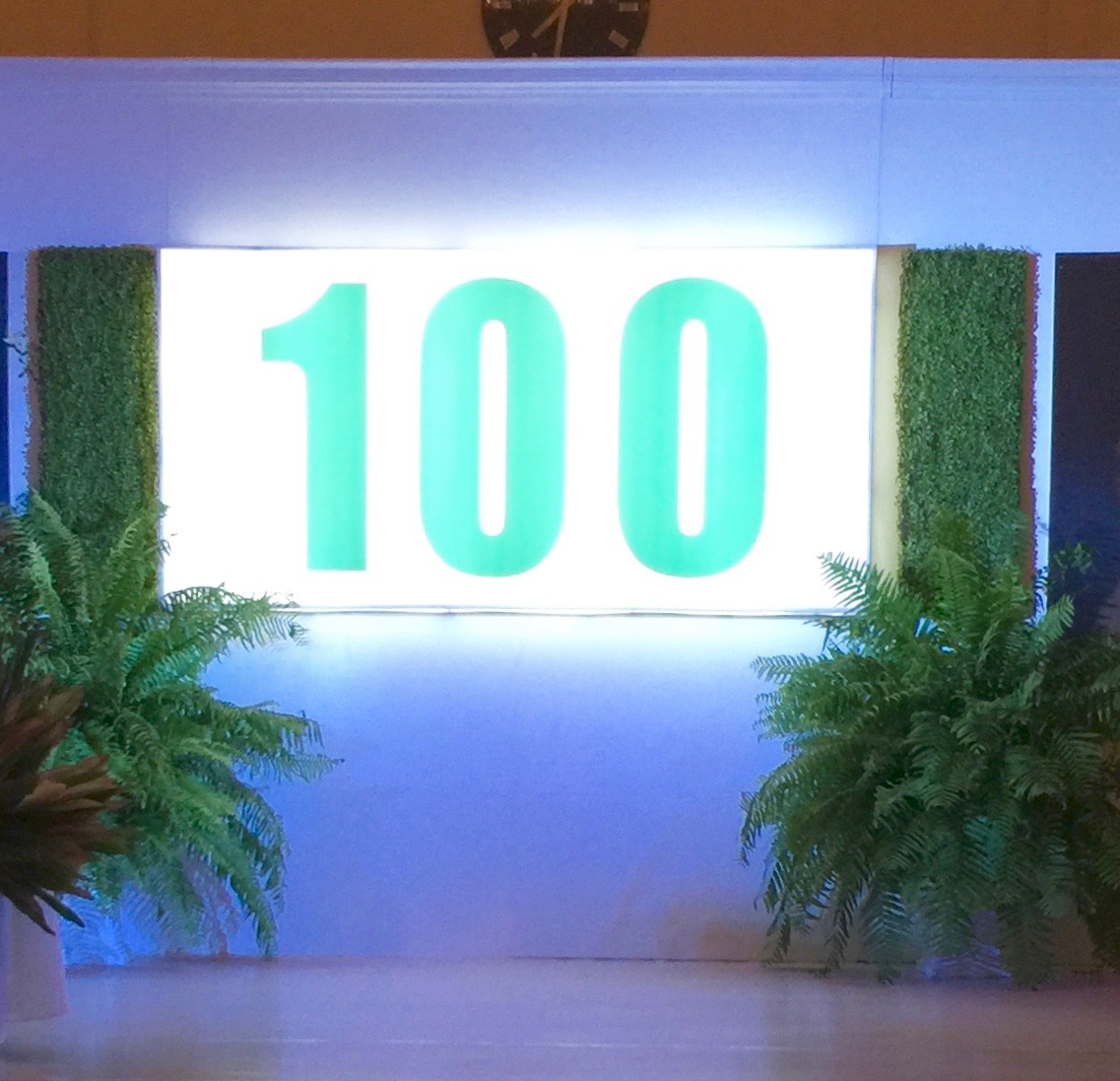
Yellow Rose of Texas: 100 Birthday Candles in Panama
The tables are clad in white. The “flowers” are tropical leaves in two-feet-tall glass containers. We perch at the round tables and move onto others like a picaflor. Tía Adelaide looks beautiful. She has on a lace, royal blue dress and her signature strands of pearls. I sit next to an aunt, 96, who is deaf, and I scream at her, trying to tell her something. Nearby is my cousin Dennis, the dentist. He has practiced dentistry in Panama for 50 years. Family members go to the mic to relate their memories in front of two enormous photos of my aunt in her 20s and 50s. Adelaide walks carefully now. Same impeccable posture. My cousin David reminds us that this is a gathering of the tribe. We are four generations of family celebrating a shared history. More than 80 years of memories for those who knew Adelaide when she first arrived in Panama when she was eighteen. I feel shy. I didn’t come prepared with words. What am I to her?
*****
On trips to Panama I stop by my tía’s apartment to collect her stories. She sits in the den on a sand-colored recliner. From her window I can see a piece of the Bay of Panama, the piece that hasn’t been chopped off by the buildings crowding the neighborhood of Punta Paitilla in Panama City. Tía Adelaide has let her hair go natural—which in her case is white. I feel a special affinity to my San Antonio, Texas tía. We both left the countries in which we were raised. I know what it’s like to adopt another home and to remain profoundly linked to the first one. Although my extended family have traveled and share a worldview, tía Adelaide and I dwell in that hybrid place: You belong but have seen the other side. My tía and I have switched places.
“I came on a banana boat. It must have been a United Fruit freighter,” she told me recently when I came to talk. “I made the trip to visit my first cousin Evelyn who’d married a lieutenant in the US Army stationed at Ft. Davis in the Canal Zone. Evelyn was like a sister to me. The only Jews in Panama were American servicemen and women in the Canal Zone. And the panameños—your family. Someone matched me with Henry.”

Little girl on the Panamanian sand.
When Adelaide arrived from Texas, we were a small community of about 500 people, our Jewish identity in mostly Catholic Panama held together by matriarchs and by tíos who led prayers in rented halls until a synagogue was built in 1936. Our families, who had begun settling in Panama in the 1850s, were influenced by a chaplain assigned to the enlisted men in the Canal Zone who steered us towards a Reform service and away from the remnants of a Sephardic Orthodox tradition.
Tía Adelaide was different from my other tías who were related to me on all sides. Our family had been marrying cousins from the Caribbean, Amsterdam, London and Hamburg for years. Aunt by marriage—tía política—she had wedded my father’s best friend and third cousin Henry. I heard the sounds of my first Texas twang hundreds of miles from that mighty state in the mighty Colossus of the North. Her Spanish was a work in progress when my English had not yet begun its journey.
In my tiny Panama where I grew up surrounded by family, tía Adelaide was flinty and matter of fact and didn’t remind us children constantly of the rules of buenas maneras that we lived by: to hold our fork just so, to sprinkle generously our kindness, our gracias and por favores. To look pretty and smile, if you were a girl. “Be gracious. Family name is important!” As Sephardic Jews of Spanish-Portuguese ancestry, we had hundreds (thousands!) of years of training in polite behavior and were well assimilated in Panamanian society.
“My best friend was your Aunt Vanessa,” she said, “who was Catholic from Trinidad with an Irish mother and married to one of your uncles. I used to drive her to Avenida Central when our husbands were working at the store. I’d been driving in Texas since I was 14.”
“Tía Adelaide, before this year I didn’t know you were Jewish. I don’t remember seeing you at temple when I was little.”
“If Henry was at the synagogue, I was there too. Both of my grandfathers came from Russia in the 1860’s, although my mother was not religious. She used to take me from town to town in Texas to meet other Jews.”
I bring books to my tía. She reads as much as me. “Have you started My Name is Lucy Barton?” I ask.
“I started it. But I find Lucy Barton not as interesting as Olive Kitteridge. But I’ll keep reading. I never give up. Your tías didn’t read. Henry’s mother who’d been raised in New York ordered American books. I loved her for that. As you know, Inés was founder and president of the Sisterhood. She convinced me to take on the Sisterhood after that. I was the second president, did you know?”
*****
At the party the DJ keeps returning to cumbias and salsas while we dance. Tia Adelaide is invited to dance. She dances twice. “I don’t know how I did it,” she tells me later. She is the last to leave. It is exactly midnight.
Marlena Maduro Baraf’s work has appeared in the Westchester Review, Blue Lyra Review, Lumina, and other publications. She blogs the Soy/Somos series for Latino Voices at the Huffington Post.
2 comments on “Yellow Rose of Texas: 100 Birthday Candles in Panama”
Comments are closed.




Oh Dear Marlena, what a wonderful tribute to Tia Adelaide, Panama, our family and roots. I feel so proud. xo, Vicky
Perfection!